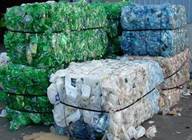4.1 Introduction
Waste is any material – solid, liquid or gas – that is unwanted and/or unvalued, and discarded or discharged by its owner as defined in ‘The New Zealand Waste Management Strategy' (MFE 2002). This chapter covers solid waste only. Gaseous waste is dealt with in the air quality chapter, hazardous waste in the hazardous wastes chapter and liquid wastes in the surface water quality chapter.
Solid waste includes common household wastes such as paper, plastic, glass, metals and kitchen and garden wastes and industrial and commercial wastes such as construction and demolition materials and organic waste from agriculture and food processing. Most solids waste is disposed of in landfills or cleanfills.
Waste management issues
 The Northland region, like others throughout the country, is producing an increasing amount and variety of waste. The management of this waste has potential for considerable environmental effects. A three-way approach is required to deal with this problem, including the reduction of wastes at source, associated programmes of reuse and recycling, along with improved methods of collecting, treating and disposing of the residual volume.
The Northland region, like others throughout the country, is producing an increasing amount and variety of waste. The management of this waste has potential for considerable environmental effects. A three-way approach is required to deal with this problem, including the reduction of wastes at source, associated programmes of reuse and recycling, along with improved methods of collecting, treating and disposing of the residual volume.
Regional Policy Statement objectives
The objectives of the Regional Policy Statement for Northland (NRC 2002) for waste management are:
· To reduce the amount of waste produced and associated disposal needs.
· To ensure that efficient and environmentally sound collection systems are available for the treatment and disposal of wastes.
Environmental results anticipated
The following is the anticipated environmental results after the implementation of the waste management policies in the Regional Policy Statement (RPS):
· A reduction in the volume of waste requiring disposal.
· A reduction in the frequency and magnitude of unauthorised disposal of waste.
· A reduction in the effects of the authorised waste disposal activities on the environment.
